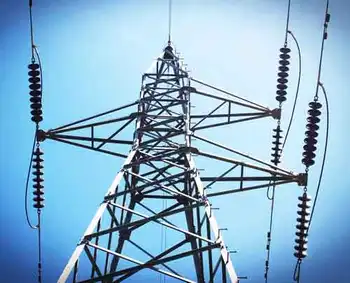Group takes stand against rate increases
By The Morehead News
Substation Relay Protection Training
Our customized live online or in‑person group training can be delivered to your staff at your location.

- Live Online
- 12 hours Instructor-led
- Group Training Available
Doug Doerrfeld is a member of Kentuckians for the Commonwealth. His organization, along with the Cumberland Chapter of the Sierra Club and the Kentucky Environmental Foundation, commissioned an EKPC financial report. The report indicates if EKPC moves forward with energy plans, its financial situation will worsen and in effect cost its customers even more. Based on the report, the organizations are encouraging EKPC to make some changes.
"We're proposing they cancel Smith One plans and move aggressively in the direction of community based energy efficiency and weatherization programs."
The proposed Smith One coal-fired power plant will be located in Clark County.
Effective April 1, EKPC raised its rates nearly $5.60. Rowan County's customers who are affected by this increase include those of Fleming-Mason Energy, Grayson Rural Electric Corp. and Clark Energy.
Doerrfeld is a Grayson Rural Electric customer.
"I'm not happy about (the increase) at all and neither are my neighbors," Doerrfeld said.
This marks the third year in a row that EKPC has raised its rates. The PSC accepted a settlement that permits EKPC to raise the company's wholesale rates in order to increase its annual revenue by nearly 7 percent, or $59.5 million.
EKPC Spokesman Nick Comer said customers will eventually save money because of the $5.60 increase. This is because the company has been purchasing power from outside sources, he said. EKPC has a shortage of generating capacity and has had unscheduled shutdowns at its generating facilities. The increase will help EKPC pay for its new H.L. Spurlock Station power plant in Maysville, according to Comer.
Doerrfeld said TR Rose Associates' financial report proves EKPC's priority to build the new coal-fired power plant is misaligned with the direction of capital markets and energy policy.
The report, titled "The Right Decision for Changing Times," states that coal is no longer a low-risk or least-cost fuel source for utilities or their ratepayers. The estimated cost of Smith One is $766 million, which is 78 percent more than what it cost EKPC to build a similar plant in 2005.
"Over the years our association has carefully tracked energy trends and practices and the financial situation of many investor owned and cooperative utilities like EKPC," said report author Tom Sanzillo. "Based on the co-op's current financial weaknesses, it is clear to me that EKPC should abandon the high-risk, high priced Smith Number One power plant, and instead benefit itself and its customers by investing in clean energy options."
EKPC can provide its customers with electricity through energy efficiency and renewable energy, according to Elizabeth Crowe, Director of the Kentucky Environmental Foundation.
Crowe said there are health and environmental burdens that come along with coal-burning power plants. Stopping the development of Smith One will avoid about $500 million of new debt at a time when EKPC needs to improve its financial position and credit rating.
"Smith One will be one of the cleanest coal generating units in the nation," Comer said. "It will provide hundreds of jobs during the time it's being built, in addition to jobs when it is in operation. East Kentucky Power has looked at renewables. In fact, we're generating more renewable energy than any other plants in Kentucky."
Comer said EKPC is looking at 22 proposals for additional renewable power, including wind, solar and biomass.
"Any time we look at a new proposal we've got to consider, 'How does this impact our members' bills? We have been involved in energy efficiency," Comer said. That is something that certainly has its place. We cannot provide enough power to replace the need for Smith Number One. We don't want to be in a situation when we don't have the capacity to provide for our members."
Kentuckians for the Commonwealth, the Cumberland Chapter of the Sierra Club and the Kentucky Environmental Foundation are not convinced by EKPC's estimate of electricity demand.
Officials with EKPC have discussed the matter with the grassroots organizations that commissioned "The Right Decision for Changing Times."
"We've explained to them the process that East Kentucky Power goes through to come up with a proposal for Smith Number One," Comer said. "There are a lot of variables we're considering in that process."
EKPC provides electricity to and is owned by 16 not-for-profit distribution cooperatives. The company serves nearly 500,000 customers in 89 Kentucky counties.











